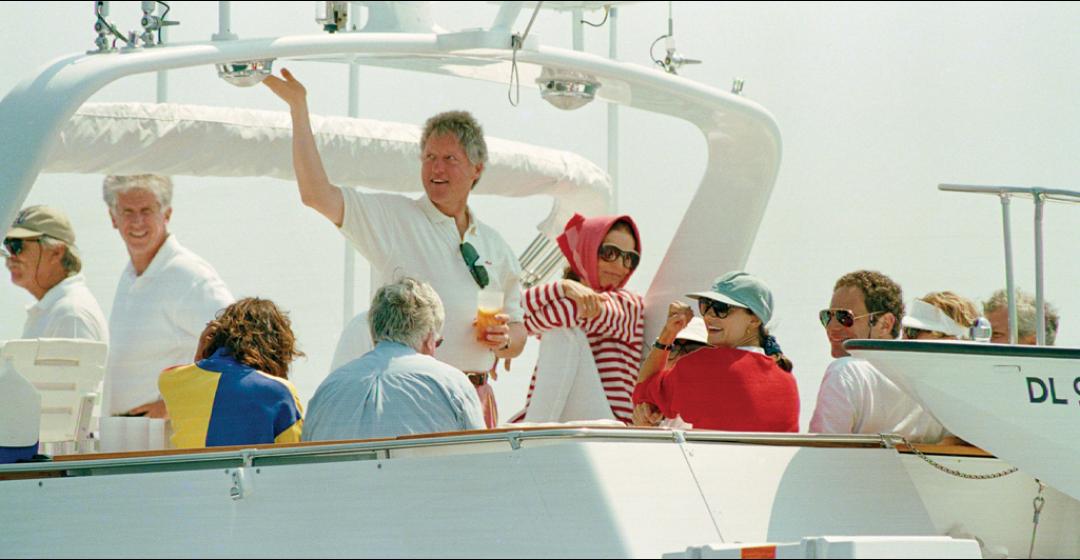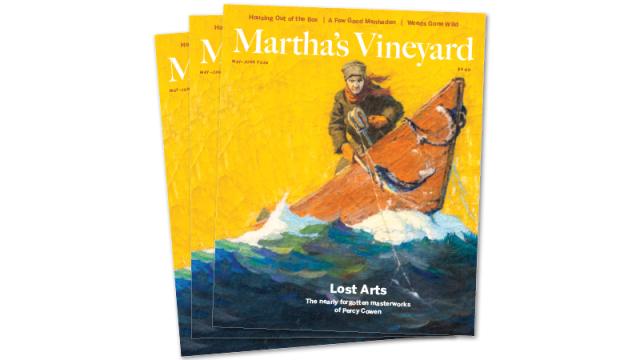The sailor shirt. Breton stripes. La marinière. By any name, this French-inspired classic has – forgive me – earned its stripes, quickly climbing the ranks from standard-issue naval wear to worldwide wardrobe staple. A quick survey of any Island beach or a stroll past the window displays on Main Street in Edgartown will no doubt yield a selection of stripes for all seasons.
Long-sleeved knit stripes first made a splash when they were named in the 1858 Act of France as the new uniform for the Brittany-based French navy. The name Breton honored the shirt’s provincial roots, and, according to popular legend, the design incorporated a Napoleonic nod: the original pullover featured twenty-one stripes, one for each of the emperor’s victories.
Loud blocks of white-and-navy stripes were thought easy to identify should unlucky mariners be tossed overboard.
A wide “boater’s” neckline made the garment easy to slip on and off, wet or dry. Soon, seafaring sorts from sailors to the savvy marchands d’ail – sea merchants who ferried garlic from Brittany to the United Kingdom – were won over by the sweater’s clean lines and functional design.
 Originally produced exclusively by Saint James, a Norman factory and atelier, stripes crossed over from working-class garment to French couture, ushered in by the grande dame of female fashion herself, Coco Chanel. Finally freed from the clutches of corsets, women at the turn of the century embraced the easy stripes of Chanel’s leisure line, particularly on the see-and-be-seen shores of Saint-Tropez.
Originally produced exclusively by Saint James, a Norman factory and atelier, stripes crossed over from working-class garment to French couture, ushered in by the grande dame of female fashion herself, Coco Chanel. Finally freed from the clutches of corsets, women at the turn of the century embraced the easy stripes of Chanel’s leisure line, particularly on the see-and-be-seen shores of Saint-Tropez.
Hollywood’s leading ladies took note of Chanel’s striped conversion. From Breathless Jean Seberg and blonde bombshell Brigitte Bardot to their stateside counterparts, Marilyn Monroe, Audrey Hepburn, and Edie Sedgwick, stripes weren’t just on the scene, they were the scene, sartorial shorthand for crisp and casual chic.
A century and a half later, stripes still convey a certain je ne sais quoi on runways and on the waterfront. Speaking of Marlon Brando, the striped shirt was prominently featured in his 1953 film The Wild One. From Picasso to legendary Hell’s Angels biker Frank Sadilek, the loose-collared, boxy striped tee took a mid-century masculine detour.
It was in the 1980s that striped worlds collided – the masculine, the feminine, the naval commander, the rebel without a cause – in the work and personal style of French designer Jean Paul Gaultier. According to Sydney Bachman, former fashion director of Bergdorf Goodman and part-time Vineyard resident, Gaultier not only once again revamped stripes for the high-fashion set, he also chose the design for his fragrance bottles, and wears stripes himself in some form every day. “I think he is the reason I wanted to buy and wear [the striped shirt] in those days, but it is just such a classic that I still wear them today, not in the city but at the beach on MV.”
Bachman was a stripe devotee pre-Gaultier, and even purchased a few of the original hand-knit Saint James styles. That was a different time, she admits. “I was always running around Paris last minute, buying things I couldn’t get in the states, which is no longer the case…for anything.”
Only a true classic can leave such a mark, crossing genders, centuries, and socioeconomic status. A quick survey of any Island beach, or a cursory glance in the windows of today’s purveyors of “casual chic,” will no doubt yield seasonal interpretations of all stripes. Bachman remembers the striped pullover she packed for her European honeymoon in 1991. “It is on me in every photo,” she notes. “I said to my husband, didn’t we ever change our clothes?”
Bachman recently passed the Breton baton, handing off her honeymoon stripes to a twenty-three-year-old niece. It is perhaps this generational reappropriation that marks the ultimate fashion coup.





